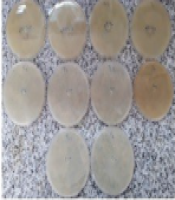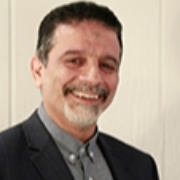1. Background
The treatment of carbapenem-resistant gram-negative bacteria infections in children can be a sensitive and complex issue. Expert consultation and clinical individualized approach was required to therapeutic decisions (1). Carbapenem are extremely effective β-lactam antibiotics presented into clinicians subsequent the appearance of extended-spectrum β-lactamases (ESBL) producing bacteria (2-4). In recent years, gram- negative bacteria capable of producing enzymes that confer resistance to wide range β-lactam antibiotics, like carbapenems have observed (5-8). It can lead appearance multi-drug resistance (MDR) or extensively drug-resistant (XDR) bacteria and it is a serious public health threat worldwide (2, 3, 9-11). The limitation of therapeutic options in infections due to MDR or XDR bacteria have been labeled as an imminent threat to global public health (5). Moreover, longer duration of hospital stays and the consequently increased health-care costs and also, high rate of morbidity and mortality due to carbapenem- resistant bacteria are posing serious challenges to the clinical management (12).
Carbapenemase enzymes confer resistance to broad-spectrum β-lactam antibiotic and it is a one of the important carbapenem resistant mechanisms in gram-negative bacteria (11, 12).
The carbapenemase producing genes can spread rapidly among bacteria because the most of them located on the movement and transferable genetic elements (11-14). In this regard, carbapenem resistant entrobactericeae was recently scheduled as one of the critical-priority bacteria by the World Health Organization (WHO) (15).
Carbepenemase producing gram-negative bacteria are one of the most problematic due to confer resistance to broad-spectrum β-lactam antibiotic, clonal spread and horizontal gene transfer, (11, 12, 15). Some rapid and cost-effective methods are used to detect carbapenemase producing bacteria and sometimes to detect the specific type of carbapenemase like double disc, Modified Hodg Test (MHT), Carba-NP Test and modified carbapenem inactivation method (mCIM) (10, 12, 14, 16, 17). Some of these methods are recommended by the 20th edition of the Clinical & Laboratory Standards Institute (CLSI) such as Carba-NP Test and mCIM (17). On the other hand, some of them was recommended by CLSI 2017 (18) but removed from CLSI 18 like MHT (19). Therefore, development of rapid and accurate detection methods is necessary to identify carbapenemase producing bacteria and it is the first and important step to inhibit spread of them in health care centers.
2. Objectives
This study aimed to evaluate mCIM to identify carbapenemase producing gram- negative bacteria which introduce in CLSI in the recent versions.
3. Methods
3.1. Bacteria Strains and Setting
In this descriptive study, 125 carbapenem-resistant gram-negative bacteria were included: Pseudomonas aeruginosa (n = 6), Acinetobacter baumannii (n = 45), Klebsiella pneumoniae (n = 44), Escherichia coli (n = 10), and Enterobacter spp. (n = 20). Carbapenemase genes were identified by two sets of multiplex PCR for detection VIM, IMP and NDM-1, SPM-1 and two conventional PCR for KPC and OXA-48 enzyme. Primer and PCR conditions were explained previously (20).
In addition, 97 carbapenem-susceptible gram-negative bacteria such as E. coli, K. pneumoniae, and Enterobacter spp. were incorporated.
3.2. Modified Carbapenem Inactivation Method
Modified carbapenem inactivation method test was conducted according to CLSI guide line (21). It is explained briefly, one microliter of enterobacteriacea family and 10 μL of P. aeruginosa and A. baumannii from an overnight plate were inoculated to 2 mL TSB for each tested bacteria. Vortexes 10 - 15 seconds and add one meropenem (10 μg) to each tube and incubated in 32 ± 2°C for 4 hours ± 15 minutes. Remove the meropenem disc from each tested tube and placed it on inoculated MHA by E. coli ATCC 25922.
(1) Carbapenemase positive strains: Inhibition zone of the E. coli ATCC 25922 6 - 15 mm.
(2) Carbapenemase negative strains: Zone Inhibition zone of the E. coli ATCC 25922 > 19 mm.
(3) Indeterminate: Zone 16 - 18 mm. The presence or absence of a carbapenemase cannot be confirmed
3.3. Modification CLSI Guideline for Modified Carbapenem Inactivation Method Test
Carbapenemase producing E. coli and also, ATCC 25922 E. coli cultured on tryptic soy broth (TSB) tube and meropenem disc suspend in each one. The meropenem disc takes out immediately and placed it on inoculated MHA by E. coli ATCC 25922 from tube 1 of both Carbapenemase producing and ATCC E. coli. This time consider as a T0. The meropenem disc takes out from both tubes 2 after pass half an hour and consequently do this procedure up to tube 9 each 30 minutes.
4. Results
The result of molecular detection of carbapenemase genes showed that OXA-48 is the most prevalent detected carbapenemase and SPM-1 was not detected in any of strain and more than half of that carried more than one carbapenemase gene (Table 1).
| VIM | IMP | KPC | NDM-1 | SPM-1 | OXA-48 | |
|---|---|---|---|---|---|---|
| Escherichia coli | - | 1 | 1 | 5 | - | 9 |
| Klebsiella pneumoniae | - | 1 | - | 29 | - | 44 |
| Enterobacter spp. | - | - | - | 19 | - | 7 |
| Pseudomonas aeruginosa | - | 2 | - | 6 | - | 1 |
| Acinetobacter baumannii | 5 | 1 | - | 36 | - | 59 |
| Total | 5 | 5 | 1 | 95 | - | 120 |
Identified Carbapenemase Genes
The results of the mCIM test performed in compliance with CLSI guideline on carbapenemase-producing bacteria exhibited 100% sensitivity for identification carbapenemase producing strains even in A. baumannii. However, in non-carbapenemase-producing bacteria, only 4% of mCIM test results were found to be consistent with the outcome of the molecular test. Therefore, the specificity of mCIM to the routine protocol is very low, measured at 4%. The results of the modification CLSI guideline for mCIM test showed that the inhibition zone of the meropenem disc in T0 of both E. coli reduced in contrast of meropenem in routine antibiotic susceptibility testing. Also, after one hour and a half, the carbapenemase-producing strain could inactivate the meropenem disc. Moreover, the inhibition diameter zone around the carbapenem disc for ATCC E. coli was found to be in the resistance range and it remained stable for four hours (Table 2). In E. coli ATCC 25922, the inhibition zone was reduced up until 15mm after three hours and it remained stable for four hours. The results of mCIM in E. coli ATCC 25922 and carbapenemase producing E. coli observe in Figure 1.
| Bacteria Inhibition Zone Diameter | Time (Each 30 Minutes), mm | ||||||||
|---|---|---|---|---|---|---|---|---|---|
| T0 | T0.5 | T1 | T1.5 | T2 | T2.5 | T3 | T3.5 | T4 | |
| Escherichia coli ATCC 25922. | 30 | 20 | 23 | 10 | 0 | 0 | 0 | 0 | 0 |
| Escherichia coli carbapenemase producing | 27 | 20 | 17 | 16 | 16 | 17 | 15 | 15 | 15 |
The Inhibition Bacteria Zone Around Meropenem Disc
The first plate in both part of pictures related to take meropenem disc on culture of E. coli ATCC without put it on TSB and according to usual disc diffusion method.
5. Discussion
Carbapenem are the last of the choice of antibiotic therapy in some cases especially to presence the ESBL producing gram-negative bacteria (3, 11, 13). Rapid and accurate detection of carbapenem resistant bacteria especially carbapenemase producing strains has very important role to inhibit the circulation of these bacteria in the hospital and health care centers (6, 12, 16). Modified carbapenem inactivation method test was introduced by CLSI to detect carbapenemase producing enterobactericea family and P. aeruginosa (19, 21). But the results of the current study showed that maybe some of the modifications are necessary to achieve the more accurate and specific results. These changes could also make this test available for A. baumannii. In this study, the results of mCIM according to CLSI guide line revealed the good sensitivity (100%) but very low specificity (4%). This low specificity indicates that, this test shows very false positive results after four hours. The inhibition zone of E. coli ATCC was 30 mm before suspend in broth medium and it became 27 mm after just suspend in broth medium just for some seconds and became 17 mm after half of hour. Therefore, these processes indicated that in the modified mCIM test the charge of meropenem disc became less immediately after suspend in broth medium. This event can observe smaller inhibition zone around meropenem and this event has nothing to do with the ability of the bacterium to produce the carbapenemase enzyme. According to the results of this study, break point of 15 mm diameter of inhibition zone consider for negative carbapenemase strain could be give the more accurate respond and the intermediate respond become more narrow.
But it is notable that after three hours we can get more accurate results if the 15 mm cut off point is considered. It means that the tested strain is carbapenemase producing if the inhibition zone of E. coli ATCC was > 15 mm and it is non-carbapenemase producing if the inhibition zone of E. coli ATCC was ≤ 15 mm. Because of the inhibition zone of E. coli ATCC was not become less than 15 mm after meropenem disc treated by non-carbapenemase producing strain.
5.1. Conclusions
The results of this study recommend that mCIM test is a valuable method to detect carbapenemase producing if the three hours consider instead of 4 hours with 15 mm break point. So, this rapid and accurate method to detect the carbapenemase producing bacteria can help to speedy better antibiotic therapy and subsequently causes a decrease the rate of mortality and morbidity in children.






